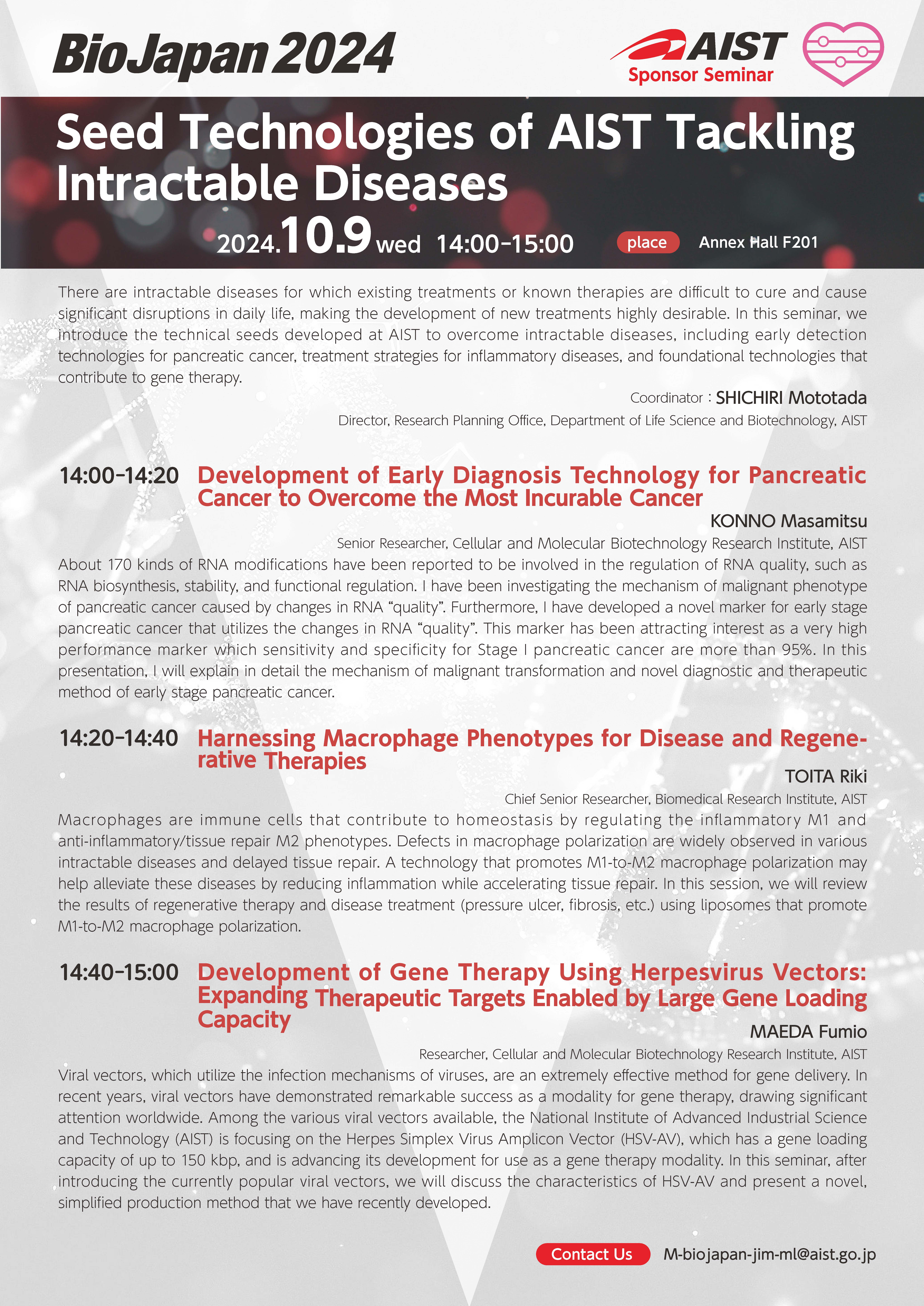BioJapan2024 Sponsor Seminar (2024.10.09,wed :Annex Hall F201)
Seed Technologies of AIST Tackling Intractable Diseases
There are still intractable diseases for which existing treatments or known therapies are difficult to cure and cause significant disruptions in daily life, making the development of new treatments highly desirable. In this seminar, we will introduce the technical seeds developed at AIST to overcome intractable diseases, including early detection technologies for pancreatic cancer, treatment strategies for inflammatory diseases, and foundational technologies that contribute to gene therapy.
Director, Research Planning Office,Department of Life Science and Biotechnology, AIST


About 170 kinds of RNA modifications have been reported to be involved in the regulation of RNA quality, such as RNA biosynthesis, stability, and functional regulation. I have been investigating the mechanism of malignant phenotype of pancreatic cancer caused by changes in RNA “quality”. Furthermore, I have developed a novel marker for early stage pancreatic cancer that utilizes the changes in RNA “quality”. This marker has been attracting interest as a very high performance marker which sensitivity and specificity for Stage I pancreatic cancer are more than 95%. In this presentation, I will explain in detail the mechanism of malignant transformation and novel diagnostic and therapeutic method of early stage pancreatic cancer.

Macrophages are immune cells that contribute to homeostasis by regulating the inflammatory M1 and anti-inflammatory/tissue repair M2 phenotypes. Defects in macrophage polarization are widely observed in various intractable diseases and delayed tissue repair. A technology that promotes M1-to-M2 macrophage polarization may help alleviate these diseases by reducing inflammation while accelerating tissue repair. In this session, we will review the results of regenerative therapy and disease treatment (pressure ulcer, fibrosis, etc.) using liposomes that promote M1-to-M2 macrophage polarization.

Viral vectors, which utilize the infection mechanisms of viruses, are an extremely effective method for gene delivery. In recent years, viral vectors have demonstrated remarkable success as a modality for gene therapy, drawing significant attention worldwide. Among the various viral vectors available, the National Institute of Advanced Industrial Science and Technology (AIST) is focusing on the Herpes Simplex Virus Amplicon Vector (HSV-AV), which has a gene loading capacity of up to 150 kbp, and is advancing its development for use as a gene therapy modality. In this seminar, after introducing the currently popular viral vectors, we will discuss the characteristics of HSV-AV and present a novel, simplified production method that we have recently developed.

